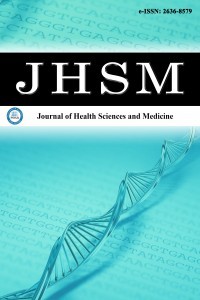1.
Evren C, Bozkurt M. Diagnosis and treatment of gambling disorder. Update Psychiatr. 2016;6(3):199-221.
2.
Ekici E. Kumar oynama bozukluğu. Yılbaş B, Öztürk Hİ (editörler). Alkol Madde Kullanım Bozuklukları ve Davranışsal Bağımlılıklar. 1. Baskı, Ankara: Akademisyen Kitabevi, 2022: 341-352.
3.
Çakmak S, Tamam L. Gambling disorder: an overview. J Dependence. 2018;19(3):78-97.
4.
American Psychiatric Association (APA). Diagnostic and Statistical Manual of Mental Disorders (DSM-5). 5<sup>th</sup> ed. Arlington: American Psychiatric Association, 2013.
5.
Potenza MN, Balodis IM, Derevensky J, et al. Gambling disorder. Nat Rev Dis Primers. 2019;5(1):51. doi: 10.1038/s41572-019-0099-7
6.
Moreira D, Azeredo A, Dias P. Risk Factors for gambling disorder: a systematic review. J Gambl Stud. 2023;(2):483-511. doi:10.1007/s10899-023-10195-1
7.
Håkansson A, Karlsson A, Widinghoff C. Primary and secondary diagnoses of gambling disorder and psychiatric comorbidity in the Swedish health care system-a nationwide register study. Front Psychiatry. 2018;9:426. doi:10.3389/fpsyt.2018.00426
8.
Kessler RC, Hwang I, LaBrie R, et al. DSM-IV pathological gambling in the national comorbidity survey replication. Psychol Med. 2008;38(9):1351-1360. doi:10.1017/S0033291708002900.
9.
Ledgerwood D, Petry NM. Gambling and suicidality in treatment seeking pathological gamblers. J. Nerv Ment Dis. 2004;192(10):711-714.
10.
Petry NM, Kiluk BD. Suicidal ideation and suicide attempts in treatment-seeking pathological gamblers. J Nervous Mental Dis. 2002;190(7):462-469.
11.
Ghelfi M, Scattola P, Giudici G, Velasco V. Online gambling: a systematic review of risk and protective factors in the adult population. J Gambl Stud. 2024;40(2):673-699. doi:10.1007/s10899-023-10258-3
12.
Cunningham JA. Little use of treatment among problem gamblers. Psychiatr Serv. 2005;56(8):1024-1025. doi:10.1176/appi.ps.56.8.1024-a
13.
Braun B, Ludwig M, Sleczka P, et al. Gamblers seeking treatment: Who does and who doesn’t? J Behav Addict. 2014;3(3):189-198. doi:10.1556/JBA.3.2014.3.7
14.
Zhao BY, Huang L, Cheng X, et al. Digital health literacy and associated factors among internet users from China: a cross-sectional study. BMC Public Health. 2024;24(1):908. doi: 10.1186/s12889-024-18324-0
15.
Zhao Y, Zhang J. Consumer health information seeking in social media: a literature review. Health Info Libr J. 2017;34(4):268-283. doi:10.1111/hir.12192
16.
Erdogan Kaya A, Erdogan Akturk B. Quality and content analysis: can YouTube videos on agoraphobia be considered a reliable source? Cureus. 2023;15(8):e43318. doi:10.7759/cureus. 43318
17.
Singh AG, Singh S, Singh PP. YouTube for information on rheumatoid arthritis-a wakeup call? J Rheumatol. 2012;39(5):899-903. doi:10.3899/jrheum.111114
18.
Altunisik E, Firat YE. Quality and reliability analysis of essential tremor disease information on social media: the study of YouTube. Tremor Other Hyperkinet Mov. 2022;12:32. doi:10. 5334/tohm.727
19.
Bernard A, Langille M, Hughes S, et al. a systematic review of patient inflammatory bowel disease information resources on the World Wide Web. Am J Gastroenterol. 2007;102(9):2070-2077. doi:10.1111/j.1572-0241.2007.01325.x
20.
Charnock D, Shepperd S, Needham G, Gann R. DISCERN: An instrument for judging the quality of written consumer health information on treatment choices. J Epidemiol Community Health. 1999;53(2):105-111. doi:10.1136/jech.53.2.105
21.
Kaşıkçı MT, Yıldırm S. Analysing YouTube videos as a source for Alzheimer’s disease information. Med J Muğla Sıtkı Kocman Uni. 2021;8(3):215-219.
22.
Koo BS, Kim D, Jun JB. Reliability and quality of Korean YouTube videos for education regarding gout. J Korean Med Sci. 2021;36(45):e303. doi:10.3346/jkms.2021.36.e303
23.
Reinhardt L, Steeb T, Mifka A, et al. German Skin Cancer Council. Quality, understandability and reliability of YouTube videos on skin cancer screening. J Cancer Educ. 2023;38(5):1667-1674. doi: 10.1007/s13187-023-02320-w.
24.
Fidan Ö, Yüksel F, Çolak E, Oskay D. Investigation of quality and information content of YouTube™ videos on physical activity in the elderly. J Adnan Menderes Uni Health Sci Fac. 2023;7(2):393-409. doi:10.46237/amusbfd.1200969
25.
Ercan S. Information quality of Turkish videos on anterior cruciate ligament rehabilitation: cross-sectional research on YouTube example. Curr Perspect Health Sci. 2021;2(2):91-96.
26.
Furtado MAS, Sousa Junior RR, Soares LA, et al. Analysis of informative content on cerebral palsy presented in Brazilian-Portuguese YouTube videos. Phys Occup Ther Pediatr. 2022;42(4): 369-383. doi:10.1080/01942638.2022.2046677
27.
Landis JR, Koch GG. The measurement of observer agreement for categorical data. Biometrics. 1977;33(1):159-174.
28.
Kim H, Nakamura C, Zeng Q. Assessment of pictographs developed through a participatory design process using an online survey tool. J Med Internet Res. 2009;11(1):e4. doi:10.2196/jmir.1129
29.
Keelan J, Pavri-Garcia V, Tomlinson G, Wilson K. YouTube as a source of information on immunization: a content analysis. JAMA. 2007;298(21):2482-2484. doi:10.1001/jama.298.21.2482
30.
Sasse M, Ohrndorf S, Palmowski A, et al. Digital health information on autoinflammatory diseases: a YouTube quality analysis. Rheumatol Int. 2023;43(1):163-171. doi:10.1007/s00296-022-05243-9
31.
Dulak NA, Anuszkiewicz K, Trzcinski R, et al. YouTube as a patient-information source for hypothyroidism. Minerva Endocrinol. 2023;48(4):371-378. doi:10.23736/S2724-6507.22. 03732-0
32.
Seo HW, Ha JW, Kwak JH, et al. A content analysis of YouTube videos on tinnitus in South Korea. Sci Rep. 2023;13(1):13579. doi: 10.1038/s41598-023-40523-9
33.
Alsabhan JF, Almalag HM, Abanmy NO, et al. A content-quality and optimization analysis of YouTube as a source of patient information for bipolar disorder. Saudi Pharm J. 2024;32(4): 101997. doi:10.1016/j.jsps.2024.101997
34.
Raj S, Ghosh A, Pandiyan S, et al. Analysis of YouTube content on substance use disorder treatment and recovery. Int J Soc Psychiatry. 2023;69(8):2097-2109. doi:10.1177/00207640231190304
35.
Wong NSM, Yeung AWK, McGrath CP, Leung YY. Qualitative evaluation of YouTube videos on dental fear, anxiety and phobia. Int J Environ Res Public Health. 2022;20(1):750. doi:10.3390/ijerph20010750
36.
Ozsoy-Unubol T, Alanbay-Yagci E. YouTube as a source of information on fibromyalgia. Int J Rheum Dis. 2021;24(2):197-202. doi:10.1111/1756-185X.14043
37.
Ergenç M, Uprak TK. YouTube as a source of information on Helicobacter pylori: content and quality analysis. Helicobacter. 2023;28(4):e12971. doi:10.1111/hel.12971
38.
Diers CS, Remvig C, Meteran H, et al. The usefulness of YouTube videos as a source of information in asthma. J Asthma. 2023;60(4):737-743. doi:10.1080/02770903.2022.2093218
39.
O’Kelly B, Holmes P, Cheng A, et al. Dissemination of health content through social networks: YouTube and opioid use disorders. J Subst Use Addict Treat. 2024;165:209475. doi:10.1016/ j.josat.2024.209475
40.
Aglamis SO, Senel S, Koudonas A. Quality analysis of YouTube videos on vulvodynia. Sex Med. 2023;11(1):qfac013. doi:10.1093/sexmed/qfac013
41.
Mylavarapu M, Maheta D, Clarke S, et al. Diabetes mellitus on YouTube: a cross-sectional observational study to assess the quality and reliability of videos. Cureus. 2023;15(8):e43704. doi: 10.7759/cureus.43704
42.
Osman W, Mohamed F, Elhassan M, Shoufan A. Is YouTube a reliable source of health-related information? A systematic review. BMC Med Educ. 2022;22(1):382. doi:10.1186/s12909-022-03446-z

